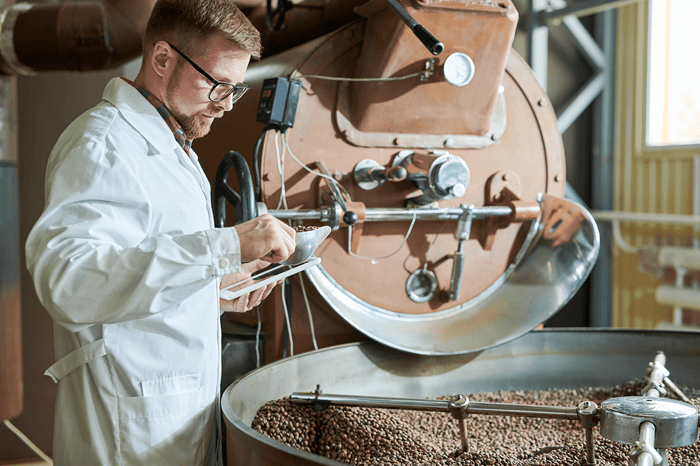So, I was just reading about this thing the other day and I thought I'd share it with you all. That thing is called "Moonsooned Malabar" coffee. Or just "Monsoon Malabar" if you're hip. I'm not, so I'll refer to it the other way.
Just what the hell is this so-called “monsoon coffee,” you may be wondering? Great question! It's a special type of coffee that's made in India using a unique coffee processing technique that's... actually more true to its name than you might expect.
It’s made by… exposing coffee beans to a monsoon.
Wait... What's a Monsoon Again Exactly?
Now, I don't know if you’re one of those people who walks around knowing what monsoons are. If you are, I salute you. I didn't really have a clear idea myself until I found myself driving through one in the middle of the desert at night one time—which is as great a time as any to brush up on climatology.
Now that I think of it, it's actually an incredibly terrible time to research climatology. Especially when it's still the late 00s and you're still rocking a cosmic blue KRZR like it's Better Call Saul. But I digress.
Anyway, monsoons are basically these huge weather phenomena that happen in certain regions in South Asia, Africa, Australia, and Central America (and sometimes Arizona when you least expect it).
What is Monsooned Malabar Coffee?
With Moonsoon Malabar, the coffee beans are exposed to monsoon winds for several months—usually about 3 to 4—which gives the beans a unique flavor that's quite different from other types of coffee. But how?
Well, monsoons last for like... months. And they bring all this water with them. And so what these people in Malabar do is take their harvested coffee beans, and they'll put them out in these humid monsoon winds, and they'll basically let them get all wet. And then they'll dry them out.
What that process does is it swells the beans up, and it causes them to lose acidity, which changes the flavor profile of the coffee in a unique way.
Who or What is a Malabar?
So that's where the monsoon in the name comes from; what about the "Malabar?" While the sound of the word had me kinda hoping that the wet beans somehow gained some sort of marshmallowy, graham crackery flavor profile—Malabar is really just the name of the region in India where this specific type of coffee is made.
In fact, Malabar is the only place on earth currently where they process Monsooned Malabar coffee beans.
And until someone violently corrects me on this, I'd say it seems to be the only place where they make coffee using a "monsooning" method at all.
Coffee and Mug Bundle

$29.99
$32.49
The Strongest Coffee in the World and Mug bundled together for the perfect combo. Black Insomnia Coffee contains 1105mg of caffeine to jump start your day Caffeine content comes from a carefully selected blend of Arabica and Fine Robusta… read more
And… the Taste?
So, what does "monsooned" coffee taste like? Well, it's actually pretty hard to describe. Perhaps the most accurate way to sum it up would be to say that Moonsooned Malabar coffee tastes like a coffee that's been aged for months in... humid monsoon winds. In Malabar.
The result of this unique process produces coffee with a unique taste that's unlike any other—though some say it may be an acquired taste.
That is—it's not for everyone. Some people find the flavor of these swole beans to be a little strong, pungent, and... musty. Others simply can't get past the fact that it's made using a process that sounds more like something out of a Roland Emmerich joint than an artisan coffee-making method.
So, now you know what moonsoon coffee is. And suddenly, everything’s coming up coffee plants. Because even on the worst days, knowing about obscure varieties of coffee made on the other side of the planet can give you a smug sense of comfort and self-satisfaction. And that's stronger than any weather phenomenon (well, not most of them).
So next time you're feeling down, take solace in the fact that you know something most people don't. It might not cure all of life's problems, but it's a start.






